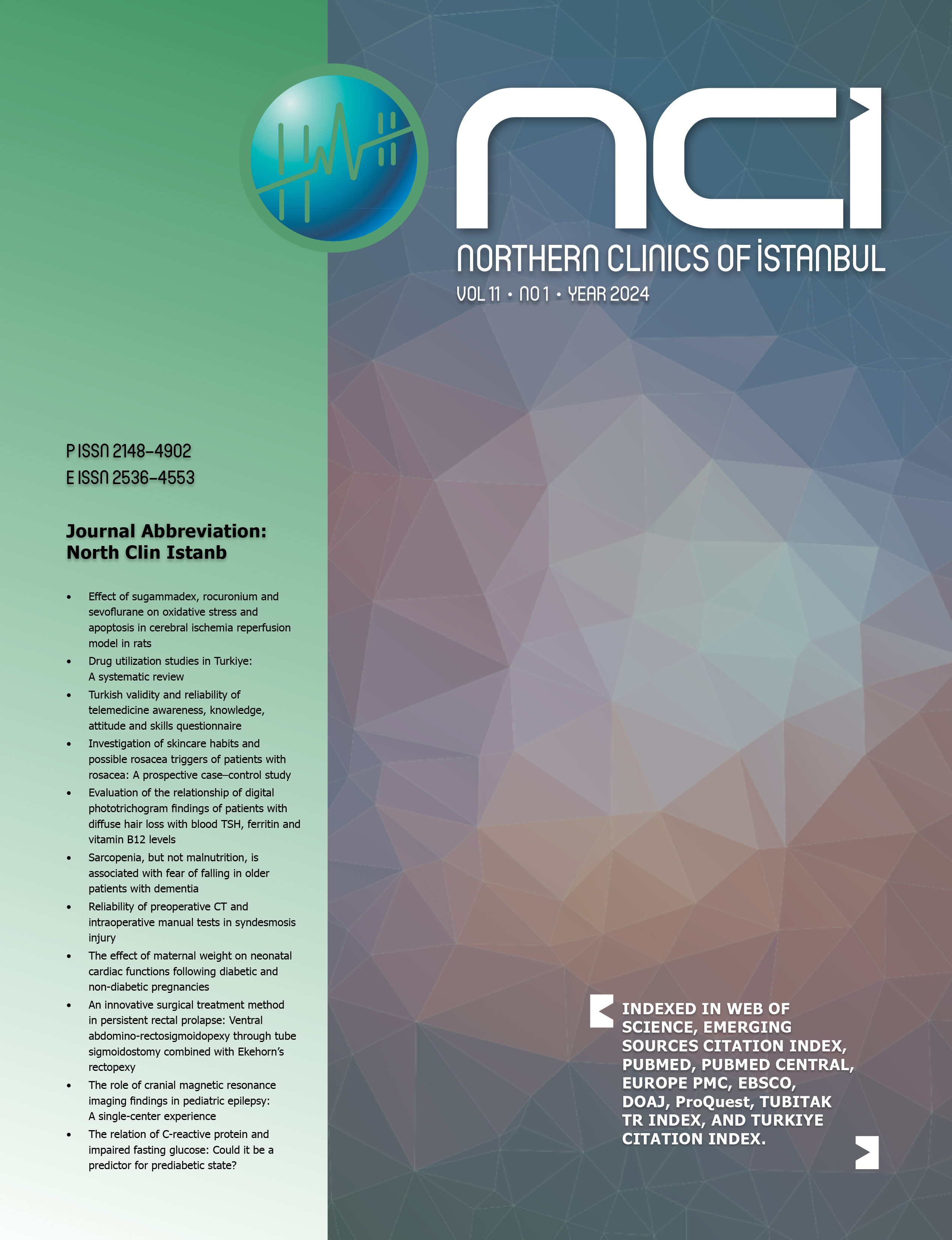Baseline macular structural and vascular changes as predictive markers of visual improvement in central retinal vein occlusion
Ulviye Kivrak1, Guzide Akcay21Department of Ophthalmology, University of Health Sciences, Kartal Dr. Lutfi Kirdar City Hospital, Istanbul, Turkiye; Advanced Neurological Sciences Programme, Istanbul University Institute of Graduate Studies in Health Sciences, Istanbul, Turkiye2Department of Ophthalmology, University of Health Sciences, Kartal Dr. Lutfi Kirdar City Hospital, Istanbul, Turkiye
OBJECTIVE: This study aims to evaluate the changes in posterior segment parameters that affect visual prognosis in patients with central retinal vein occlusion (CRVO).
METHODS: This retrospective study included 58 eyes of 58 CRVO patients. Best-corrected visual acuity (BCVA), intraocular pressure, central macular thickness (CMT), hyperreflective foci (HRF), ellipsoid zone (EZ) loss, disorganization of retinal inner layers (DRIL), intraretinal cystic changes, posterior vitreous detachment (PVD), and macular superficial and deep vascular density (VD), as well as superficial and deep foveal avascular zone (FAZ) areas, were assessed at baseline and 3 months follow-up after treatment. The treatments (intravitreal injections and laser) received were recorded.
RESULTS: The mean age was 63.02±9.91 years, 37 (63.8%) were female, and 39 (67.3%) were classified as having non-ischemic CRVO. The mean baseline BCVA was 0.64±0.85 logMAR; at 3 months, it improved to 0.39±0.65 logMAR (p<0.001). The mean baseline CMT was 478.9±82.6 µm, and at 3 months, it reduced to 288.56±72.39 µm (p<0.001). At baseline, HRF in 31% of eyes, EZ disruption in 44.8% of eyes, DRIL in 17.2% of eyes, intraretinal cysts in 55.2% of eyes, and PVD in 43.1% of eyes. A significant decrease in BCVA was observed in patients with EZ loss (p<0.001), while the presence of intraretinal cysts had significant impact on CMT (p=0.007). Furthermore, a statistically significant neg-ative correlation was observed between foveal and superior VD in both the superficial and deep capillary plexus (SCP, DCP) and changes in BCVA (logMAR). In contrast, a positive correlation was found between superficial FAZ area and BCVA (logMAR). Additionally, a statistically significant positive correlation was noted between foveal VD in both the SCP and DCP and changes in CMT.
CONCLUSION: The study emphasizes the importance of structural and vascular changes in predicting functional outcomes and suggests the utility of optical coherence tomography (OCT) and OCT angiography in early visual prognosis and treatment planning.
Santral retinal ven tıkanıklığında görsel iyileşmenin tahmini belirteçleri olarak temel makular yapısal ve vasküler değişiklikler
Ulviye Kivrak1, Guzide Akcay21Sağlık Bilimleri Üniversitesi, Kartal Dr. Lütfi Kırdar Şehir Hastanesi, Göz Hastalıkları Kliniği, İstanbul; İleri Nörolojik Bilimler Programı, İstanbul Üniversitesi Sağlık Bilimleri Enstitüsü, İstanbul2Sağlık Bilimleri Üniversitesi, Kartal Dr. Lütfi Kırdar Şehir Hastanesi, Göz Hastalıkları Kliniği, İstanbul
Amaç: Bu çalışmanın amacı, santral retinal ven tıkanıklığı (SRVT) hastalarında görsel prognozu etkileyen arka segment parametrelerindeki değişiklikleri değerlendirmektir.
Gereç ve Yöntemler: Bu retrospektif çalışmaya 58 SRVT hastasına ait 58 göz dahil edilmiştir. En iyi düzeltilmiş görme keskinliği (EİDGK), göz içi basıncı, santral maküler kalınlık (SMK), hipereflektif odaklar (HRO), ellipsoid zon (EZ) kaybı, retina iç katmanlarının düzensizliği (DRIL), intraretinal kistik değişiklikler, posterior vitreus dekolmanı (PVD), ve maküler süperfisiyal ve derin vasküler dansite (VD), ayrıca süperfisiyal ve derin foveal avasküler zone (FAZ) alanları, tedavi öncesi ve tedavi sonrası 3. ayda değerlendirilmiştir. Alınan tedaviler (intravitreal enjeksiyonlar ve lazer tedavisi) kaydedilmiştir.
Bulgular: Ortalama yaş 63,02±9,91 yıl, 37 (%63,8) hasta kadın, 39 (%67,3) hasta non-iskemik SRVT olarak sınıflandırılmıştır. Başlangıçta ortalama EİDGK 0,64 ± 0,85 logMAR iken, 3. ayda 0,39±0,65 logMARa iyileşmiştir (p<0,001). Başlangıçta ortalama SMK 478,9 ± 82,6 µm iken, 3. ayda 288,56±72,39 µmye düşmüştür (p<0,001). Başlangıçta, %31 gözde HRO, %44,8 gözde EZ kaybı, %17,2 gözde DRIL, %55,2 gözde intraretinal kistler ve %43,1 gözde PVD gözlemlenmiştir. EZ kaybı olan hastalarda EİDGKde önemli bir azalma gözlemlenmiş (p<0,001), intraretinal kist varlığının ise SMK üzerinde anlamlı bir etkisi olduğu bulunmuştur (p=0,007). Ayrıca, hem süperfisiyal, hem de derin kapiller pleksustaki (SKP, DKP) foveal ve süperior VD ile EİDGK değişiklikleri (logMAR) arasında istatistiksel olarak anlamlı negatif bir korelasyon olduğu gözlemlenmiştir. Süperfisiyal FAZ alanı ile EİDGK (logMAR) arasında ise pozitif bir korelasyon bulunmuştur. Ayrıca, hem SKP hem de DKPdeki foveal VD ile SMK arasında istatistiksel olarak anlamlı pozitif bir korelasyon saptanmıştır.
Sonuç: Bu çalışma, makuladaki yapısal ve vasküler değişikliklerin görsel prognozu tahmin etmedeki önemini ve optik koherans tomografi (OKT) ile OKT-anjiografinın erken görsel prognoz ve tedavi planlamasında oldukça faydalı görüntüleme yöntemleri olduğunu vurgulamaktadır. (NCI-2024-12-15)
Manuscript Language: English





















